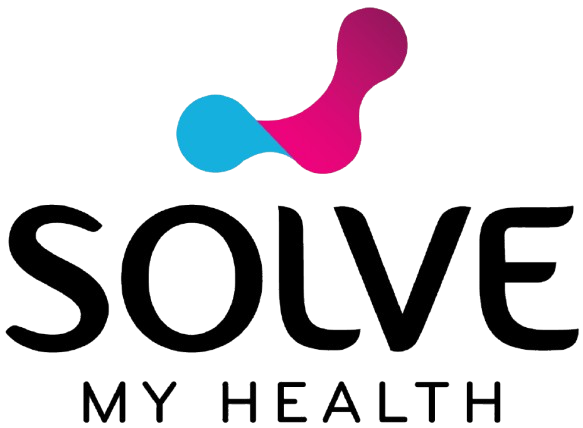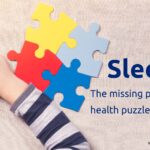Restless Leg Syndrome (RLS), clinically known as Willis-Ekbom disease, is a neurological disorder characterized by an irresistible urge to move the legs, often accompanied by uncomfortable sensations. These sensations, commonly described as crawling, tingling, or creeping, typically occur during periods of rest or inactivity, such as when sitting or lying down, and can disrupt sleep and daily activities. RLS often leads to insomnia, as symptoms worsen in the evening or at night, and can be temporarily relieved by movement, like walking or stretching.
The disruption in sleep caused by RLS can also contribute to anxiety and impact overall health, particularly as sleep loss worsens daily functioning and increases mental stress. RLS can vary in severity and frequency, with some individuals experiencing mild discomfort, while others have severe symptoms that deeply affect daily life and sleep quality. Although the exact cause of RLS is unclear, it is believed to involve abnormalities in dopamine signaling in the brain, with potential links to iron deficiency. A CBC test (Complete Blood Count) can be helpful in evaluating iron levels and detecting deficiencies that may exacerbate RLS symptoms. Low iron levels, which can be connected to pregnancy and kidney issues, are sometimes found in individuals with RLS, which is why testing and addressing iron deficiency can be a part of the treatment plan.
Also Read: Snoring & Sleep Apnea – Treatment & Lifestyle Management
In some cases, other nutrient deficiencies, like calcium and Vitamin B12, may play a role in the symptoms of RLS, as these nutrients are essential for nerve health. Additionally, RLS may be associated with conditions like thyroid disorders, particularly hypothyroidism, which can contribute to muscle discomfort and exacerbate RLS symptoms. It is also important for individuals with RLS to discuss their symptoms with healthcare professionals, as a neurologist can help with specialized assessment and management, and a CBC test can be useful for further diagnosis.
RLS is a chronic condition that affects individuals of all ages, though its prevalence increases with age, with 5-10% of adults experiencing moderate to severe symptoms. Increasing awareness and understanding of RLS among healthcare professionals and the general public is crucial for timely diagnosis, appropriate treatment, and improved quality of life for patients. This blog aims to provide a comprehensive overview of Restless Leg Syndrome, including its causes, symptoms, diagnosis, treatment options, and coping strategies, to help enhance awareness and support for individuals with this condition.
Link between RLS & Sleep disturbances
Individuals with RLS often experience an overwhelming urge to move their legs during periods of rest, particularly in the evening or at night. This urge is accompanied by uncomfortable sensations in the legs, such as tingling, crawling, or aching sensations. These sensations usually worsen when lying down or sitting for extended periods, making it challenging to relax and fall asleep. These sleep disturbances ultimately result in daytime fatigue, impaired cognitive function, and reduced quality of life.
In addition to disrupting sleep, RLS symptoms can also affect the sleep quality of bed partners or family members. The constant movement and restlessness associated with RLS can disturb the sleep of those sharing the same bed or sleeping nearby, leading to further sleep disturbances and daytime fatigue for both the individual with RLS and their sleep partner
Also Read: Periodic Limb Movement Disorder (PLMD) & its impact on Sleep
RLS Causes and Risk Factors Affecting Sleep
Neurological factors: contribute significantly to the manifestation of Restless Leg Syndrome (RLS). This condition is believed to originate from abnormalities within the brain’s dopamine system, which is integral to regulating both movement and sensory processing. Dysfunction in dopamine signaling pathways can disrupt the delicate balance of neurotransmitters involved in motor control and sensory perception. Consequently, this disruption can lead to the development of RLS symptoms. Furthermore, research indicates that alterations in brain iron levels, crucial for dopamine synthesis and function, may also play a role in the pathophysiology of RLS.
Genetic predisposition: and familial patterns are significant factors in RLS. Approximately 50% of individuals with RLS report a family history of the condition, indicating a hereditary component. Several genetic variants have been identified that increase susceptibility to RLS. These variants often involve mutations in genes associated with iron metabolism, dopamine receptors, and neuronal development. While genetics play a pivotal role in predisposing individuals to RLS, environmental factors and lifestyle choices may also influence the severity and expression of symptoms.
Iron deficiency and nutritional imbalances: have been strongly associated with RLS. Iron is essential for dopamine synthesis and function in the brain. Low levels of iron within the brain can disrupt dopamine signalling pathways, thereby contributing to the development of RLS symptoms. Additionally, deficiencies in other nutrients such as folate, magnesium, or vitamin B12 have also been implicated in RLS, although the exact mechanisms remain unclear.
Certain medications: have been reported to exacerbate or trigger RLS symptoms in susceptible individuals. These medications include antidepressants, antipsychotics, antihistamines, and certain anti-nausea drugs, among others. The interference with dopamine signalling or exacerbation of sensory disturbances by these medications can worsen RLS symptoms. It is essential for individuals experiencing RLS symptoms to consult their healthcare provider before starting or discontinuing any medications to minimize the risk of exacerbating symptoms.
Pregnancy-related RLS: is a common phenomenon, particularly during the third trimester. Hormonal changes and increased blood volume during pregnancy can exacerbate sensory disturbances and leg discomfort, leading to RLS symptoms. Pregnancy-related RLS can significantly disrupt sleep quality and contribute to maternal fatigue and daytime sleepiness. Management strategies for pregnancy-related RLS may include lifestyle modifications, iron supplementation, and non-pharmacological interventions to alleviate symptoms and improve sleep outcomes for expectant mothers.
Also Read: Sleep Disorders & Impact on Health
Diagnosing Restless Leg Syndrome
Differential diagnosis is essential for distinguishing RLS from other sleep disorders or medical conditions that may present similar symptoms. Conditions such as peripheral neuropathy, nocturnal leg cramps, and certain movement disorders can mimic RLS symptoms and require careful evaluation to rule out alternative diagnoses. In some cases, additional diagnostic tests may be recommended to assess iron levels, evaluate sleep patterns, or rule out other underlying medical conditions contributing to RLS symptoms. These tests may include blood tests to measure serum ferritin levels, polysomnography (sleep study) to monitor sleep architecture and limb movements, or nerve conduction studies to assess nerve function in individuals with suspected peripheral neuropathy.
RLS Treatment & Improving Sleep
Managing Restless Leg Syndrome (RLS) and its associated sleep disturbances often involves adopting various treatment strategies. These approaches include lifestyle modifications, pharmacological interventions, and non-pharmacological therapies, which collectively aim to alleviate symptoms and improve sleep quality, especially for those with related conditions like insomnia or anxiety.
Lifestyle modifications play a pivotal role in managing RLS symptoms. Regular exercise can reduce the severity of RLS symptoms and also improve sleep quality. Establishing good sleep hygiene practices, such as maintaining a consistent sleep schedule and creating a comfortable sleep environment, can help alleviate RLS-related sleep disturbances. Additionally, dietary adjustments, such as ensuring adequate intake of iron, calcium, Vitamin B12, and other nutrients, may be beneficial. Iron supplementation may be recommended for individuals with iron deficiency, as low iron levels have been associated with worsening RLS symptoms, particularly in conditions like pregnancy or kidney disease.
Compression therapy, involving the use of compression stockings or wraps on the legs, can help improve blood flow and reduce leg discomfort associated with RLS symptoms, especially during rest. Additionally, massage and relaxation techniques, such as gentle massage, stretching exercises, and deep breathing, may help alleviate muscle tension and promote relaxation, improving sleep quality for those with RLS. Addressing deficiencies, including Vitamin B12 and calcium, can further support nerve health and symptom management.
Pharmacological interventions are commonly used to manage RLS symptoms and improve sleep outcomes. Dopaminergic agents, such as pramipexole and ropinirole, are often prescribed to increase dopamine levels in the brain, helping alleviate RLS symptoms. Alpha-2-delta ligands, including gabapentin and pregabalin, may also be used to modulate calcium channels and reduce symptoms. In severe cases that don’t respond to other treatments, opioids such as oxycodone or tramadol may be prescribed to alleviate symptoms and improve sleep. However, due to the potential for dependency and tolerance, opioids are typically reserved for individuals with severe, refractory RLS, following careful assessment by a neurologist or urologist.
In addition to pharmacological interventions, researchers are exploring non-pharmacological therapies to manage RLS-related sleep disturbances. Interventions such as cognitive behavioral therapy (CBT) and mindfulness-based stress reduction (MBSR) have shown promise in improving sleep quality and reducing symptoms by targeting psychological factors like stress and anxiety.
Advancements in technology, such as wearable devices and smartphone applications, are also utilized to monitor RLS symptoms and track treatment outcomes. For individuals with related issues, such as thyroid disorders, hypothyroidism, or even migraine headaches, wearable technology helps track symptom patterns and responses to various interventions. Moreover, tools like CBC tests and CT scans are valuable for a comprehensive diagnosis, ruling out conditions like hypothyroidism or Vitamin B12 deficiency, which can impact neurological health and digestion – potentially influencing RLS symptoms as well. These tools enable individuals with RLS to actively participate in their care and provide valuable data for healthcare providers and researchers.
How can we help at SOLVE?
Living with Restless Leg Syndrome (RLS) and its sleep disturbances can be daunting, but there’s hope with SOLVEMyHealth. Our integrated approach brings together a diverse team of experts including neurologists, sleep medicine doctors, psychiatrists, and psychologists. With our collaborative efforts, we tailor personalized treatment plans to address each individual’s needs effectively. At SOLVEMyHealth, lifestyle management is our strength. Our team excels in structuring diet and exercise plans to alleviate RLS symptoms and improve sleep quality. We’re committed to empowering individuals to take control of their condition and live better lives.
Contact us today to learn more about our services and how we can support you on your journey to better sleep and overall well-being.










